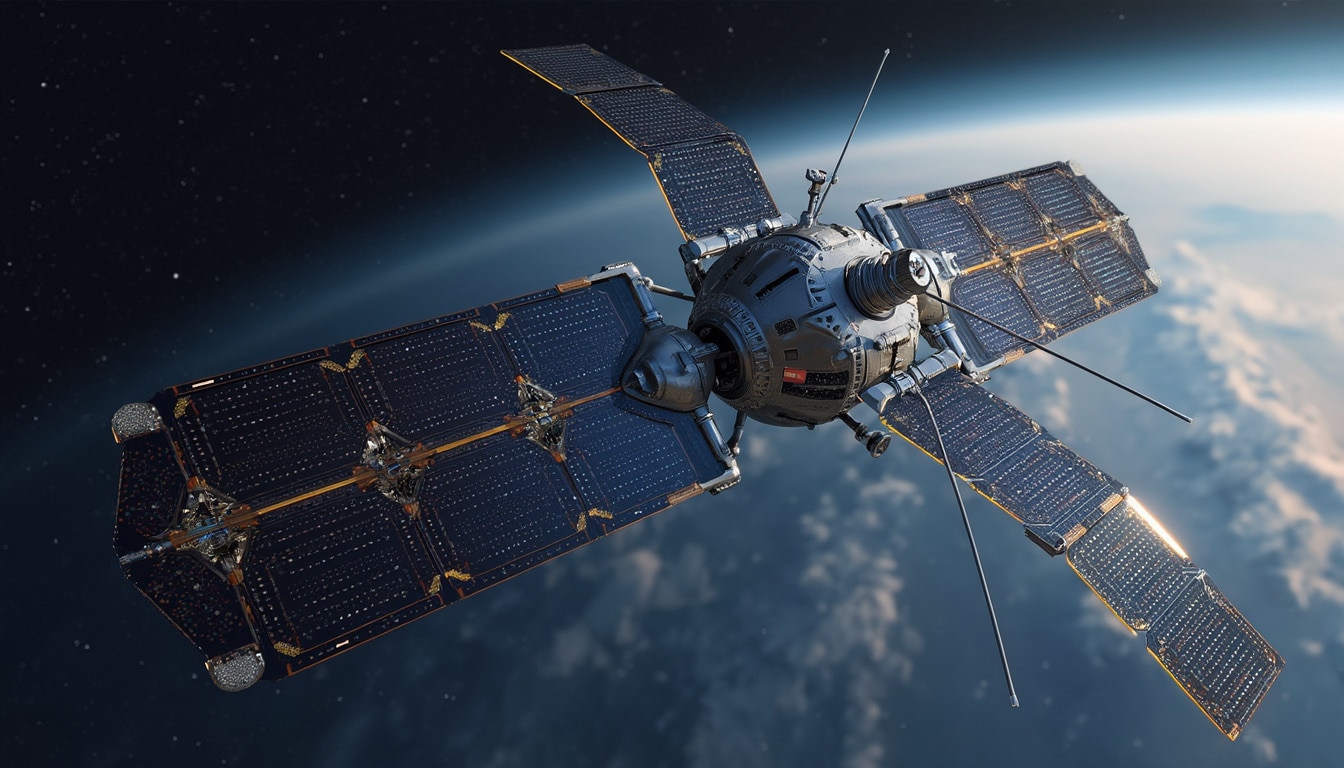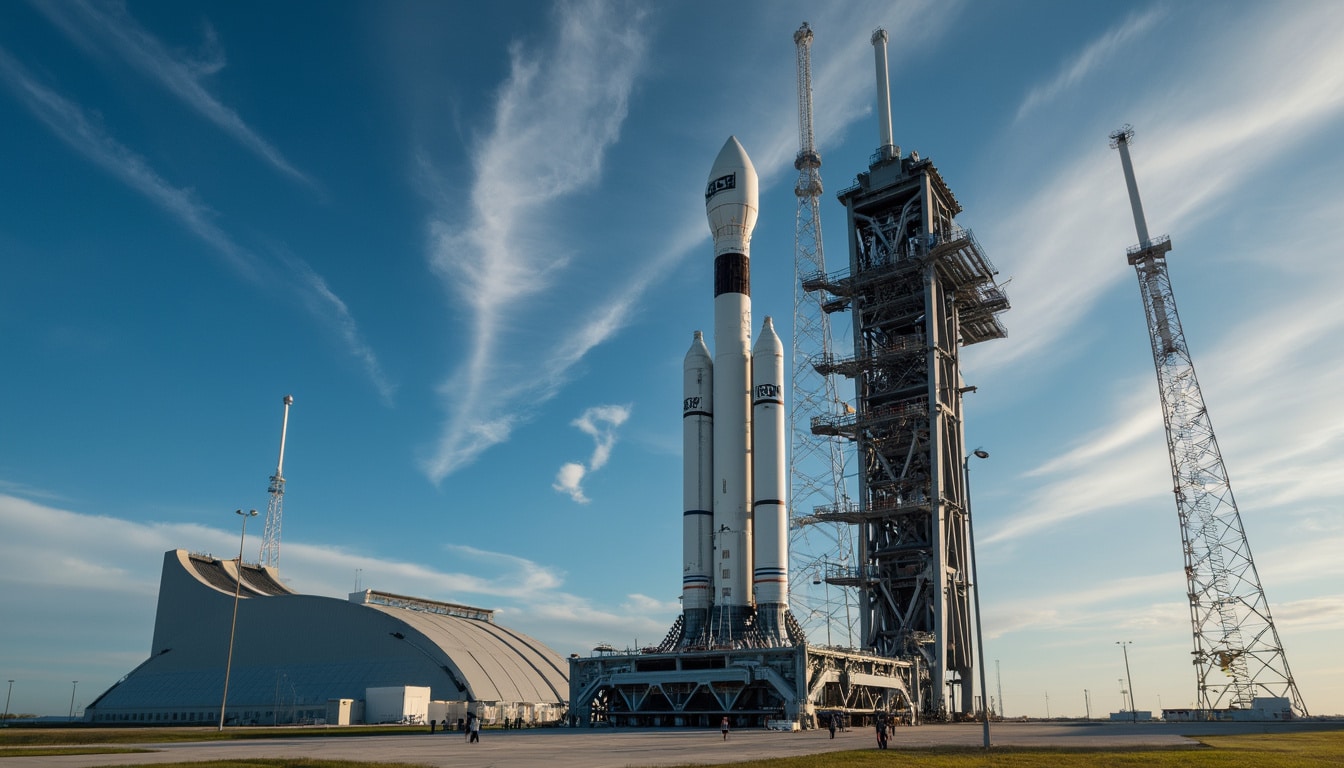The excitement surrounding space exploration continues to grow as SpaceX prepares for another significant event. The upcoming launch of the SpainSat NG-1 satellite marks a remarkable milestone for SpaceX and its partner, Hisdesat, as they aim to enhance secure communications across Europe and beyond. This launch, scheduled to occur from Kennedy Space Center’s historic Pad 39A, is not just another mission; it signifies advancements in technology and international collaboration in the realm of telecommunications.
As space enthusiasts around the world gear up for this exciting event, understanding the significance of the SpainSat NG-1 mission is crucial. The satellite is part of a broader program designed to provide critical services to governmental and military entities, utilizing cutting-edge technology that promises to revolutionize communications. Let’s delve deeper into what this launch entails and why it matters.
The SpainSat NG Program: A Look into Advanced Satellite Technology
At the heart of this upcoming launch lies the SpainSat NG program, which seeks to provide an advanced communication platform for various applications. The SpainSat NG-1 satellite is equipped with state-of-the-art technology, specifically designed to meet the demands of modern secure communications. With its ability to operate both in X-band and military Ka-band, SpainSat NG-1 offers versatility that has never been seen before in Europe’s satellite communications.
The Role of Hisdesat and ESA
Hisdesat is a vital player in this partnership alongside the European Space Agency (ESA). The company, which specializes in secure communications, has made significant investments to enhance its satellite capabilities. With this launch, the SpainSat NG-1 will ensure that European governments and military entities have reliable access to secure telecommunications. As CEO Miguel Ángel García Primo states, this satellite will serve regions across Europe, Africa, and the Americas.
Innovative Features of the SpainSat NG-1
The SpainSat NG-1 is a technological marvel equipped with beam-hopping and geolocation capabilities. These features facilitate advanced data management, allowing for efficient transmission across vast areas. Such technology supports the burgeoning fields of artificial intelligence, big data, and the Internet of Things (IoT), opening numerous opportunities for civil and military applications alike. Airbus, a leader in aerospace manufacturing, has played a crucial role in developing its antennas, enhancing the satellite’s capabilities even further.

Countdown to Launch: What to Expect on Launch Day
As the launch window approaches, anticipation builds among space enthusiasts and the general public alike. Launch day is set between 8:34 PM on Wednesday and 1:53 AM on Thursday, providing a prime opportunity for spectators both near the launch site and around the globe to witness this event. The significance of the launch is further compounded by the fact that this occurs at the historic Kennedy Space Center, a site known for its pivotal role in space exploration.
Logistics and Preparation
Various teams have been working tirelessly in the lead-up to the launch. Engineers and support personnel ensure that every system is meticulously checked, from the Falcon 9 rocket’s structural integrity to the SpainSat NG-1’s readiness for deployment. The scale of preparation underscores the complexities involved in launching such a sophisticated satellite into orbit.
The Viewing Experience: Watching the Launch
For those lucky enough to be in Florida, especially on the Space Coast, viewing the launch in person offers an experience like no other. With cozy beaches and dedicated viewing spots, spectators can witness the Falcon 9 rocket ignite the night sky. Along with the live audience, SpaceX will also provide live streaming options for those unable to attend in person, ensuring everyone can be part of this extraordinary moment.

The Broader Impact of SpainSat NG-1
This launch is not merely a feat of engineering but a step towards global stability and advanced communication. The SpainSat NG-1 satellite aims to provide secure communication capabilities during emergencies, ensuring that governmental and military operations can continue unabated in the face of disaster. It exemplifies how satellite technology can enhance both civic and defense operations, further embedding satellites into the fabric of modern life.
Global Collaborations and Future Missions
The power of collaboration is at the core of the SpainSat NG program. Working closely with international partners allows countries to share resources and expertise, furthering the development of satellite communications. Looking forward, similar initiatives are in the pipeline, promising a future where global communications can become more efficient and secure.
The Future of Space Exploration
With the SpainSat NG-1 satellite launch, the stage is set for an era of enhanced satellite capabilities. As SpaceX continues to pioneer new technologies and missions, the potential for further innovative advances remains strong. Upcoming launches, such as those featuring SpaceX’s ambitious plans for Starlink satellites, showcase the company’s relentless pursuit of improving connectivity and communication through satellite technologies.

Additional Insights on Future Space Missions
As space exploration continues to evolve, the relevance of satellite missions cannot be understated. The SpainSat NG program is poised to influence the trajectory of future space missions, particularly in improving secure communications. Understanding these undertakings sheds light on the importance of investing in satellite technology and infrastructure.
Technological Advancements Shaping Satellite Communication
The landscape of satellite communications is dramatically changing thanks to continuous technological advancements. Enhanced materials for satellite construction, sophisticated software, and the integration of AI are transforming how satellites function. SpainSat NG-1 stands as a testament to these innovations, showcasing how technology can meet increasing communication demands.
Exploring the Economic Impact of Satellite Launches
The implications of satellite launches extend beyond communication enhancements; they also significantly impact the global economy. Developing and deploying satellite technology creates jobs and stimulates growth within the aerospace industries. Investments from companies such as SpaceX and its partners act as catalysts for further exploration and innovation, enhancing competitiveness on a global scale.
The Community and Educational Aspects of Space Exploration
The excitement surrounding space missions like the launch of SpainSat NG-1 extends far beyond the technical aspects; it also encompasses community engagement and educational initiatives. As SpaceX captures global attention, it fosters interest among the younger generations, motivating them to explore careers in STEM (science, technology, engineering, and mathematics).
Inspiring the Next Generation
Witnessing launches sparks curiosity about space and technology, prompting schools and educational institutions to integrate related themes into their curricula. Events celebrating launches often include activities aimed at educating the public about space exploration, encouraging active participation in scientific dialogue.
Community Collaboration and Events
As launches approach, local communities often come together to celebrate these momentous occasions. Activities featuring town halls, educational sessions, and viewing parties unite individuals in a shared experience. Such endeavors not only enhance local engagement but also amplify the importance of space exploration within the community.





Leave a Reply